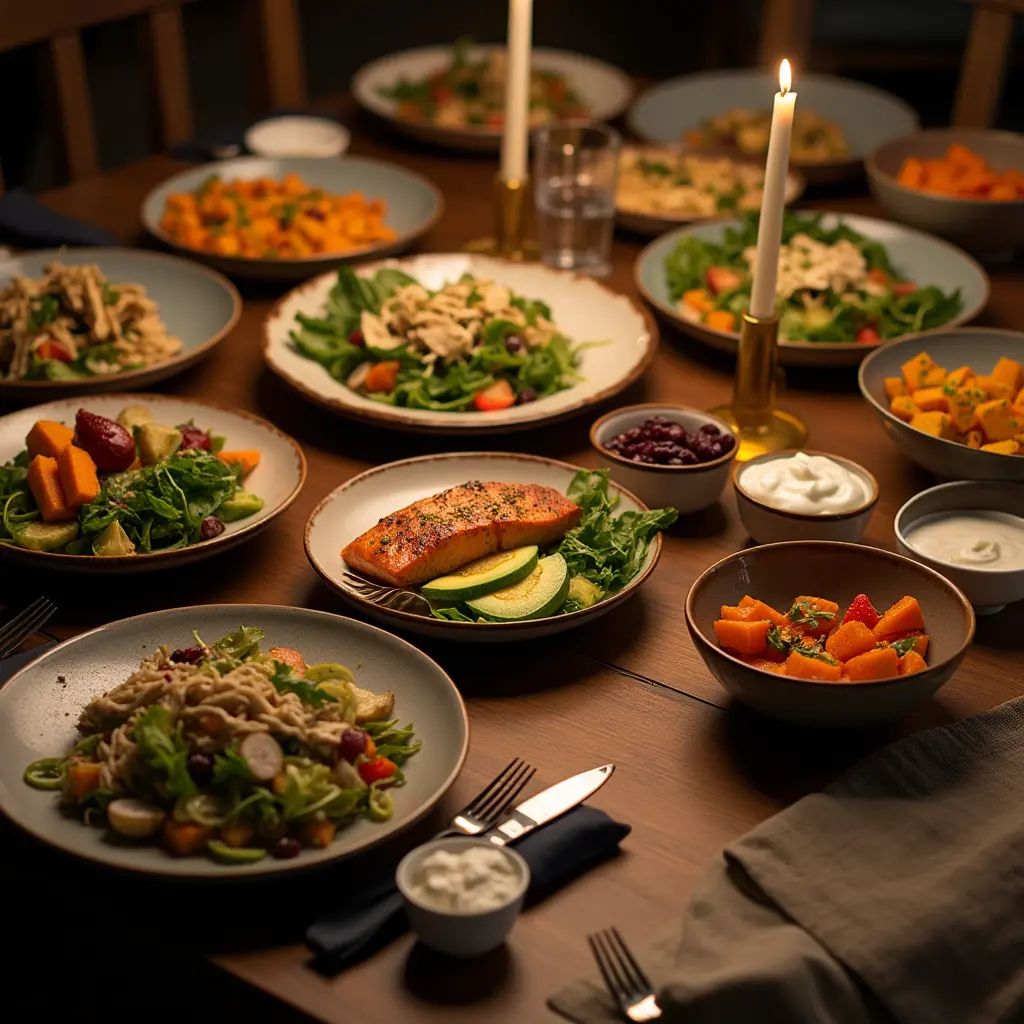Finding Relief with AIP Meals
Managing an autoimmune condition can feel like a constant battle—one that requires more than just medications or treatments. If you’re struggling with symptoms such as fatigue, joint pain, or digestive issues, you may have already explored dietary changes as part of your healing process. One diet that’s gaining recognition for its ability to manage and potentially reduce symptoms of autoimmune diseases is the Autoimmune Protocol (AIP) diet.
The AIP diet is designed to help reduce inflammation, support gut health, and heal your immune system. It focuses on nutrient-dense foods while eliminating common triggers like gluten, dairy, legumes, and nightshades. But if you’re new to AIP, it can feel overwhelming. You might be wondering where to begin or how to plan your meals so they’re both satisfying and compliant with the strict guidelines of the diet.
Don’t worry—you’re not alone. This article will guide you through 7 powerful AIP meal plan ideas that are not only simple and delicious but also designed to support your body’s healing process. Along the way, you’ll also discover common mistakes to avoid, so you can make the most of your journey to better health.
Table of Contents
What is the AIP Diet?
Before diving into the meal ideas, let’s break down what the AIP diet is all about.
The Autoimmune Protocol (AIP) is a strict elimination diet that aims to reduce inflammation and promote healing by removing foods that are known to trigger immune responses in sensitive individuals. Based on the Paleo diet, the AIP diet goes even further by excluding certain foods that may exacerbate autoimmune conditions.
Key Components of the AIP Diet
- Elimination Phase: The first phase of AIP involves eliminating foods that are potential triggers. This eliminates foods such as grains, dairy products, legumes, eggs, nightshade vegetables (including tomatoes and peppers), nuts, seeds, alcohol, and any processed items.
- Reintroduction Phase: After an elimination period (typically 30 days), foods are reintroduced one at a time, allowing you to monitor any adverse reactions.
The Goal of AIP
The primary goal of AIP is to calm inflammation, improve gut health, and give your immune system the best chance to heal. By eliminating inflammatory foods and focusing on nutrient-dense options, you’re essentially giving your body a chance to reset and reduce the autoimmune response.
Benefits of the AIP Diet for Autoimmune Health
If you’re dealing with autoimmune issues, adopting an AIP meal plan could have a profound effect on your health. Here are some key benefits that people experience when they follow the AIP diet:
1. Reduces Inflammation
Chronic inflammation is often at the root of autoimmune conditions. The AIP diet helps reduce inflammation by eliminating foods that can cause flare-ups, like processed sugars and grains. With less inflammation, you may notice a reduction in pain, swelling, and overall discomfort.
2. Supports Gut Health
The gut is where much of your immune system resides. By removing foods that irritate the gut lining (like grains, dairy, and legumes), the AIP diet helps heal the gut, which can lead to better digestion and fewer symptoms like bloating or gas.
3. Boosts Energy Levels
Many people with autoimmune conditions report feeling chronically fatigued. Once you remove inflammatory foods and focus on nutrient-dense, whole foods, you may experience a noticeable increase in energy. This can help you feel more active and engaged in your day-to-day life.
4. Helps Manage Symptoms of Autoimmune Diseases
For those with conditions like rheumatoid arthritis, Hashimoto’s thyroiditis, or Crohn’s disease, following an AIP meal plan can result in fewer flare-ups and less severe symptoms. By addressing the root causes of inflammation and gut dysfunction, AIP offers a natural alternative to managing autoimmune conditions.
Key Foods to Include in Your AIP Meal Plan
The success of your AIP meal plan depends on the foods you choose to include. When building your meals, focus on foods that nourish your body, reduce inflammation, and promote gut health.
Nutrient-Dense AIP-Friendly Foods
Here are some of the foods you should focus on incorporating into your AIP meal plan:
- Meats and Fish: Grass-fed beef, wild-caught salmon, turkey, and chicken are all excellent sources of high-quality protein. Organ meats, such as liver and heart, are nutrient-dense and offer added benefits.
- Vegetables: Root vegetables like sweet potatoes and carrots, as well as leafy greens like spinach, kale, and arugula, provide essential vitamins and minerals. You can also include cruciferous vegetables such as broccoli and cauliflower.
- Fruits: Berries (blueberries, strawberries), apples, and pears are excellent choices. However, it’s important to limit fruit intake during the elimination phase if you’re sensitive to sugar.
- Healthy Fats: Olive oil, avocado oil, coconut oil, and grass-fed butter provide healthy fats essential for cellular repair and inflammation reduction.
- Bone Broth: Rich in collagen, bone broth is great for gut health, helping to heal and seal the gut lining.
Foods to Avoid on the AIP Diet
While the focus is on nutrient-dense foods, there are several foods you’ll need to avoid to reduce inflammation and prevent triggering your autoimmune response:
- Grains: The diet excludes wheat, rice, oats, corn, and other grain varieties.
- Dairy: Dairy items such as milk, cheese, yogurt, and butter are excluded.
- Legumes: Beans, lentils, and peanuts must be avoided.
- Nightshades: Vegetables like tomatoes, peppers, eggplants, and potatoes, which can worsen inflammation, are to be eliminated.
- Processed Foods: Anything with added sugar, preservatives, or artificial ingredients should be eliminated.
- Alcohol and Caffeine: Both can interfere with gut health and inflammation control.
7 Powerful AIP Meal Plan Ideas
Planning your meals on the AIP diet doesn’t have to be complicated or boring. Here are seven AIP meal plan ideas that will keep your taste buds satisfied while providing the nourishment your body needs to heal.
1. AIP Breakfast: Sweet Potato Hash with Ground Turkey
This hearty breakfast combines protein-rich ground turkey with fiber-filled sweet potatoes and kale, creating a filling and nutritious start to your day.
Ingredients:
- 1 medium sweet potato (diced)
- 1/2 lb ground turkey
- 1 cup kale (chopped)
- 1 tbsp coconut oil
- Sea salt and pepper (to taste)
Directions:
- Add coconut oil to a skillet and heat on medium.
- Add the diced sweet potato and cook for about 10 minutes, or until tender.
- Move the sweet potatoes to one side and add the ground turkey. Cook until browned.
- Add chopped kale and cook until wilted. Season with sea salt and pepper.
- Serve warm, adding a light drizzle of olive oil on top as a garnish.
2. AIP Lunch: Chicken Salad with Avocado and Mixed Greens
This vibrant salad is rich in protein, healthy fats, and abundant vitamins. It’s a perfect midday meal that’s light but filling.
Ingredients:
- 1 cup shredded chicken (cooked)
- 1 avocado (sliced)
- 2 cups mixed greens
- 1 tbsp olive oil
- 1 tbsp lemon juice
- Sea salt (to taste)
Directions:
- Mix the shredded chicken, avocado, and mixed greens together in a bowl.
- Drizzle with olive oil and lemon juice. Toss to combine.
- Season with sea salt to your liking and serve immediately.
3. AIP Dinner: Grilled Salmon with Roasted Vegetables
A simple yet flavorful dinner, this dish features wild-caught salmon paired with nutrient-rich roasted vegetables for a well-rounded meal.
Ingredients:
- 2 salmon fillets (wild-caught)
- 1 cup carrots (sliced)
- 1 cup Brussels sprouts (halved)
- 2 tbsp olive oil
- Sea salt and pepper (to taste)
Directions:
- Preheat the oven to 400°F (200°C).
- Coat the carrots and Brussels sprouts with olive oil, salt, and pepper, then roast for 20 minutes, turning them halfway through.
- While the vegetables are roasting, sprinkle salt and pepper over the salmon fillets.
- Grill the salmon for 4-5 minutes on each side, or until fully cooked
- Serve the salmon with roasted vegetables.
4. AIP Snack: Coconut Yogurt with Blueberries
A simple and satisfying snack, this coconut yogurt pairs perfectly with antioxidant-rich blueberries for a treat that’s both healing and delicious.
Ingredients:
- 1/2 cup AIP-friendly coconut yogurt
- 1/4 cup fresh blueberries
Directions:
- Spoon the coconut yogurt into a bowl.
- Top with fresh blueberries and enjoy!


How to Transition to an AIP Meal Plan
Making the switch to an AIP diet can be challenging, but the benefits are worth the effort. Here are a few tips to help you transition smoothly and stay on track:
Start Slowly
If the idea of completely overhauling your diet feels overwhelming, start by removing the most inflammatory foods first, then gradually work your way through the elimination phase.
Keep a Food Journal
Tracking what you eat and how you feel can help you identify any food sensitivities and ensure you’re getting the right balance of nutrients.
Conclusion: Your Path to Wellness with AIP Meals
Adopting an AIP meal plan could be a transformative step toward managing your autoimmune health. By eliminating inflammatory foods and focusing on nourishing, whole foods, you’re giving your body the best chance to heal from within.
Take it one meal at a time, and don’t forget to be patient with yourself. Healing is a journey, and every step you take with the AIP diet is a step toward better health.
Ready to get started? Begin with these 7 powerful AIP meal plan ideas, and start feeling the positive impact on your body and energy levels today!



